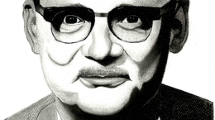Abstract
Neuroscience research, like all science, is vulnerable to the influence of extraneous values in the practice of research, whether in research design or the selection, analysis and interpretation of data. This is particularly problematic for research into the biological mechanisms that underlie behavior, and especially the neurobiological underpinnings of moral development and ethical reasoning, decision-making and behavior, and the other elements of what is often called the neuroscience of ethics. The problem arises because neuroscientists, like most everyone, bring to their work assumptions, preconceptions and values and other sources of potentially inappropriate bias of which they may be unaware. It is important that the training of neuroscientists, and research practice itself, include open and in-depth discussion and examination of the assumptions that underlie research. Further, policy makers, journalists, and the general public, that is, the consumers of neuroscience research findings (and by extension, neurotechnologies) should be made aware of the limitations as well as the strengths of the science, the evolving nature of scientific understanding, and the often invisible values inherent in science.
Similar content being viewed by others
Notes
This is in contrast to appropriate bias in favor of factors that can be justified, which, in the research setting, would include a preference for reproducible results.
References
Baker, M. (2012). Independent labs to verify high-profile papers. Nature News, August 14. http://www.nature.com/news/independent-labs-to-verify-high-profile-papers-1.11176. Accessed 6 Sep 2012.
Begley, S. (2012). In cancer science, many “discoveries” don’t hold up. Business Financial News, March 28. http://www.reuters.com/article/2012/03/28/us-science-cancer-idUSBRE82R12P20120328. Accessed 6 Sep 2012.
Bennett, C. M., & Miller, M. B. (2010). How reliable are the results from functional magnetic resonance imaging? Annals of the New York Academy of Sciences, 1191, 133–155. http://prefrontal.org/blog/2010/02/paper-how-reliable-are-the-results-from-functional-magnetic-resonance-imaging/. Accessed 6 Sep 2012.
Bird, S. J. (2003). Communicating scientific advice to the public, The IPTS Report 72 (March): 20–24. The Institute for Prospective Technological Studies.
Bird, S. J. (2005). Neuroethics. In C. Mitcham (Ed.), Encyclopedia of science, technology, and ethics (pp. 1310–1316). Detroit, USA: Macmillan Reference.
Bird, S. J. (2009). Neuroethics. In L. Squire (Ed.), Encyclopedia of neuroscience (pp. 385–391). Oxford: Academic Press.
Bird, S. J., & Parlee, M. B. (2000). Of mice and men (and women and children): Scientific and ethical implications of animal models. Progress in Neuro-Psychopharmacology and Biological Psychiatry, 24, 1219–1227.
Cartwright, S. A. (1851/1981). Report on the diseases and physical peculiarities of the Negro race. The New Orleans Medical and Surgical Journal (May 1851): 691–715. Reprinted in A. L. Caplan, H. T. Engelhardt Jr., J. McCartney (Eds.), Concepts of health and disease: Interdisciplinary perspectives (pp. 305–332). Reading, MA: Addison-Wesley.
Chan, A.-W., Krleza-Jeric, K., Schmid, I., & Altman, D. G. (2004). Outcome reporting bias in randomized trials funded by the Canadian institutes of health research. Canadian Medical Association, 171(7), 735–740.
Damasio, A. R. (2003). Looking for Spinoza: Joy, sorrow, and the feeling brain. Orlando, FL: Harcourt.
Gould, S. J. (1981). The mismeasure of man. New York, NY: W.W. Norton & Company.
Gould, S. J. (1996). The mismeasure of man, revised and expanded. New York: W.W. Norton & Company.
Guertin, R. P. (1995). Commentary on: ‘‘How are scientific corrections made?’’ (N. Kiang). Science and Engineering Ethics, 1(4), 357–359.
Henry, S., & Plemmons, D. K. (2012). Neuroscience, neuropolitics and neuroethics: The complex case of crime, deception and fMRI. Science and Engineering Ethics, 18, this issue. doi:10.1007/s11948-012-9393-4.
Hoffman-Kim, D. (1995). On being a ‘postdoctoral’ scientist. Science and Engineering Ethics, 1(3), 311–312.
Kuhn, T. S. (1970). The structure of scientific revolutions (2nd ed.). Chicago, IL: University of Chicago Press.
Lampe, M. (2012). Science, human nature, and a new paradigm for ethics education. Science and Engineering Ethics, 18, this issue. doi:10.1007/s11948-012-9373-8.
Lexchin, J., Bero, L. A., Djulbegovic, B., & Clark, O. (2003). Pharmaceutical industry sponsorship and research outcome and quality: Systematic review. British Medical Journal, 326(7400), 1167.
Lo, B., & Field, M. J. (Eds.). (2009). Conflict of interest in medical research, education, and practice. Washington, DC: National Academies Press.
Longino, H. E. (1990). Science as social knowledge: Values and objectivity in scientific inquiry. Princeton, NJ: Princeton University Press.
Longino, H. E., & Doell, R. (1983). Body, bias and behavior: A comparative analysis of reasoning in two areas of biological science. Signs, 9, 209–227.
Marino, G. (2004). Before teaching ethics, stop kidding yourself. The Chronicle of Higher Education, 50(24), B5.
Mumford, M. D. (2012). Handbook of organizational creativity. Waltham, MA: Academic Press.
Olson, S. (1989). On being a scientist (1st ed.). Washington, DC: National Academies Press.
Roskies, A. (2002). Neuroethics for the new millennium. Neuron, 35, 21–23.
Smith-Rosenberg, C., & Rosenberg, C. (1973/1981). The female animal: Medical and biological views of woman and her role in nineteenth-century America. The Journal of American History (Sep 1973): 332–356. Reprinted in A. L. Caplan, H. T. Engelhardt Jr., and J. J. McCartney (Eds.), Concepts of health and disease: Interdisciplinary perspectives (pp. 281–303). Reading, MA: Addison-Wesley.
Stenmark, C. K., Antes, A. L., Wang, X., Caughhron, J. J., Theil, C. E., & Mumford, M. D. (2010). Strategies in forecasting outcomes in ethical decision-making: Identifying and analyzing the causes of the problem. Ethics Behavior, 20, 110–127.
Taylor, C. (2004). Modern social imaginaries. Durham, London: Duke University Press.
Venet, D., Dumont, J. E., & Detours, V. (2011). Most random gene expression signatures are significantly associated with breast cancer outcome. PLoS Computational Biology, 7(10), e1002240. doi:10.1371/journal.pcbi.1002240. http://www.ploscompbiol.org/article/info%3Adoi%2F10.1371%2Fjournal.pcbi.1002240. Accessed 6 Sep 2012.
White, T. I. (2007). In defense of dolphins: The new moral frontier. Oxford: Blackwell.
Acknowledgments
I would like to thank my colleagues Michael Kalichman, Dena Plemmons, Elizabeth Cervantes and Dave Kukla for their valued input and perspective.
Author information
Authors and Affiliations
Corresponding author
Rights and permissions
About this article
Cite this article
Bird, S.J. Potential for Bias in the Context of Neuroethics. Sci Eng Ethics 18, 593–600 (2012). https://doi.org/10.1007/s11948-012-9399-y
Received:
Accepted:
Published:
Issue Date:
DOI: https://doi.org/10.1007/s11948-012-9399-y




